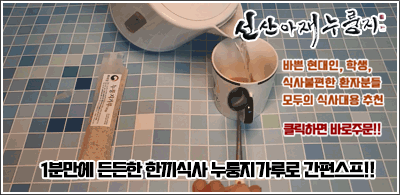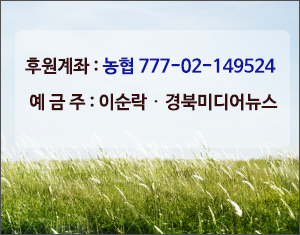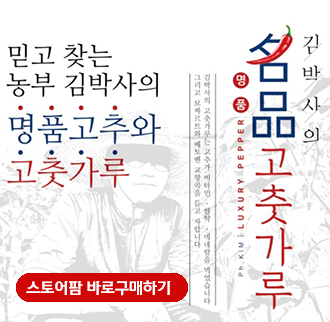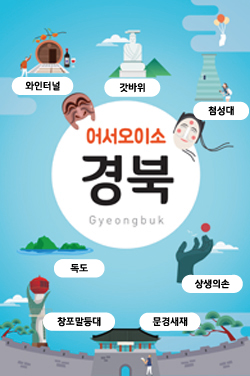《World Geumgung Sports Association's Words of the Day》 An independence…
~President of the World Geumgung Sports Association, publisher of KTN Korea Communications Association
Independence activist Kim Won-sik served as a member of the Military Liaison Committee in Northeast-myeon of the Provisional Government of Japanese colonial era and an executive member of the Jilin Jeonman Anti-Japanese Alliance and contributed to the formation of the Shinhan Independence Party.
Currently, the tomb of independence activist Kim Won-sik is located outside the Gangbuk-type Yangga Village in Yongdam-gu, Guilin, China. In 1993, the Ministry of Patriots and Veterans Affairs promoted the repatriation of independence activists and confirmed the graves of five independence activists, but Kim Won-sik has not yet been repatriated.
The graves of independence activists were difficult to take the form of a burial mound to avoid China's cremation and cemetery ban policy.
On November 29, I inquired the Merit Management Division of the Ministry of Patriots and Veterans Affairs and recently visited again to return Kim Won-sik, but after a long time, the location of the tomb cannot be found.
According to the Department of Merit Management, excavation is allowed only when a clear basis is given to the Chinese public security in order to excavate graves at the time of a visit to China.
The grave of Kim Won-sik, buried over time, is a bleak reality, but I think it is something to be thankful for that it has been confirmed that he has been in a place outside Yangga Village in Jilin Province for a long time.
It is said that the majority of the descendants of independence activists born and raised in Jilin Province have left the region.
The place where Kim Won-sik is now is also our land, where our spirit breathes. It may be difficult to return Kim Won-sik, but I think we can form a solidarity with Jilin Province through the memorial project.
I would like to reflect on the life of Kim Won-sik, who has become a medium for exchanges between China's Jilin Province and Korea, where the spirit of independence activists remains.
Kim Won-sik, a native of Andong, Gyeongsangbuk-do, defected to Bongcheon, Manchuria in 1919 and joined the Western Military Government. In 1920, he served as a temporary member of the Provisional Government of the Republic of Korea in Shanghai.
In 1921, under the direction of Lee Sang-ryong, Dokpan of the Western Military Government, secretly entered the country and contacted the leaders of the country to raise military funds.
In 1922, representatives of each military group, including the Seoseo Military Government, Korean Independence Corps, Byeokchang Uiyongdae, Gwangbok-gun General, Pyeongbuk Dokpanbu, Bohabdan, and Gwanghandan, gathered and appointed them as students under the decree of the Provisional Government.
Since 1924, he has invested in the Ministry of Justice and served as a central executive committee member, and in 1927, he took the lead in establishing the Farmers' Hojosa Corporation for the purpose of national unity and improving the lives of farmers.
In 1928, he served as the representative of the Ministry of Justice during the Sambu Integration Movement, but when his will was thwarted, he organized an innovation council and was appointed as the chairman of the Central Executive Committee.In 1929, he went to Shanghai to hold a crowd competition in response to the Gwangju Student Movement, which was being developed in Korea at the time, and soon formed the Shanghai Korean Youth League.
In 1930, he was elected as a member of the executive committee of the Jilin Jeonman Shipbuilding Alliance. After the Manchurian Incident in 1931, he served as a military commissioner in Northeast-myeon, and was arrested by the first army and imprisoned for two years.After that, he went back to Manchuria and met in Nanjing with Yoon Ki-seop, the representative of the Korean Revolutionary Party, as a representative of the Korean Independence Party in February 1934, and formed the New Independence Party in March.
The Korean government was awarded the Order of Independence in 1968 in honor of Kim Won-sik's contribution.
Independence activist Kim Won-sik served as a member of the Military Liaison Committee in Northeast-myeon of the Provisional Government of Japanese colonial era and an executive member of the Jilin Jeonman Anti-Japanese Alliance and contributed to the formation of the Shinhan Independence Party.
Currently, the tomb of independence activist Kim Won-sik is located outside the Gangbuk-type Yangga Village in Yongdam-gu, Guilin, China. In 1993, the Ministry of Patriots and Veterans Affairs promoted the repatriation of independence activists and confirmed the graves of five independence activists, but Kim Won-sik has not yet been repatriated.
The graves of independence activists were difficult to take the form of a burial mound to avoid China's cremation and cemetery ban policy.
On November 29, I inquired the Merit Management Division of the Ministry of Patriots and Veterans Affairs and recently visited again to return Kim Won-sik, but after a long time, the location of the tomb cannot be found.
According to the Department of Merit Management, excavation is allowed only when a clear basis is given to the Chinese public security in order to excavate graves at the time of a visit to China.
The grave of Kim Won-sik, buried over time, is a bleak reality, but I think it is something to be thankful for that it has been confirmed that he has been in a place outside Yangga Village in Jilin Province for a long time.
It is said that the majority of the descendants of independence activists born and raised in Jilin Province have left the region.
The place where Kim Won-sik is now is also our land, where our spirit breathes. It may be difficult to return Kim Won-sik, but I think we can form a solidarity with Jilin Province through the memorial project.
I would like to reflect on the life of Kim Won-sik, who has become a medium for exchanges between China's Jilin Province and Korea, where the spirit of independence activists remains.
Kim Won-sik, a native of Andong, Gyeongsangbuk-do, defected to Bongcheon, Manchuria in 1919 and joined the West Military Government. In 1920, he served as a temporary member of the Provisional Government of the Republic of Korea in Shanghai.
In 1921, under the direction of Lee Sang-ryong, Dokpan of the Western Military Government, secretly entered the country and contacted the leaders of the country to raise military funds.
In 1922, representatives of each military group, including the Seoseo Military Government, Korean Independence Corps, Byeokchang Uiyongdae, Gwangbok-gun General, Pyeongbuk Dokpanbu, Bohabdan, and Gwanghandan, gathered and appointed them as students under the decree of the Provisional Government.
Since 1924, he has invested in the Ministry of Justice and served as a central executive committee member, and in 1927, he took the lead in establishing the Farmers' Hojosa Corporation for the purpose of national unity and improving the lives of farmers.
In 1928, he served as the representative of the Ministry of Justice during the Sambu Integration Movement, but when his will was thwarted, he organized an innovation council and was appointed as the chairman of the Central Executive Committee.In 1929, he went to Shanghai and held a crowd competition in response to the Gwangju Student Movement, which was taking place in Korea, and soon after, he decided to form the Shanghai Korean Youth League
2022.11.30
World Geumgung Sports Association: 054-456-9865 3rd floor of Shinsiro 4-F, Hyeonggok-dong, Gumi-si, Gyeongsangbuk-do, Korea
-E-mail: flower_im@naver.com
-Recommended by heads of associations around the world
- Consultation on holding gold palace sports education programs and competitions for local governments, public institutions, schools, training centers, and military units across the country.
-I hope Mohammed bin Salman bin Abdulaziz Al Saud and Oprah Gail Winfrey and Elon Musk and Mark Zuckerberg and Bill Gates will generously sponsor the world of gold palace sports
《세계금궁스포츠협회 오늘의 말》돌아올 수 없는 독립운동가, 하지만 얼은 그 자리에
사진 설명: 경북 안동 출신 독립운동가 김원식 선생
김원식 독립운동가는 일제강점기 임시정부 동북면군사연락위원, 길림전만선반제동맹대회 집행 위원을 역임하며 신한독립당 결성에 공로하였다.
현재 김원식 독립운동가의 묘소는 중국 길림시 용담구 강북형 양가촌 마을 외곽에 위치해있다. 지난 1993년 국가보훈처는 독립운동가 봉환을 추진했고, 5인의 독립운동가 묘소를 확인한 바 있으나 김원식 선생은 아직 봉환되지 않았다.
독립운동가들의 묘소는 중국의 화장 및 묘지금지정책을 피하기 봉분의 형태를 갖추기 어려운 실정이었다.
11월 29일 국가보훈처 공훈관리과에 문의해 본 바 김원식 선생의 봉환을 위해 근래에 다시 찾았으나, 오랜 시간이 흘러 그 묘소의 위치를 찾을 수 가 없는 실정이라고 한다.
공훈관리과에 따르면 중국 현지 방문 당시 묘소 발굴을 위해서는 중국 공안에게 명확한 근거를 대야만 발굴이 허락된다고 하였다.
세월에 묻혀 김원식 선생의 묘소는 찾기 힘든 상태가 되어 암담한 현실이지만, 오랜 세월 길림성 양가촌 외곽의 한 곳에 계셨다는 것이 확인 된 것만으로도 감사해야할 일이라고 생각한다.
길림성에서 태어나고 자란 독립운동가 후손들 대다수가 지역을 떠났다고 한다.
지금 김원식 선생이 계신 곳 또한 우리네 땅이요, 우리의 얼이 숨쉬고 있는 곳이다. 김원식 선생의 봉환은 어려울 수 있겠지만, 추모사업을 통해 길림성과 연대를 할 수는 있다고 생각한다.
독립운동가의 정신이 남아 있는 중국 길림성과 한국이 교류할 수 있는 매개체가 된 김원식 선생의 삶을 되새기고자 한다.
김원식 선생은 경상북도 안동 출신으로 1919년 만주 봉천(奉天)으로 망명, 서로군정서(西路軍政署)에 가입하였다. 1920년 상해에서 대한민국임시정부의 임시의정원 의원으로 활동하였다.
1921년 서로군정서 독판(督辦)이상룡(李相龍)의 지시로 비밀리에 입국하여 전국 유지들과 연락, 군자금을 마련하였다.
1922년 서로군정서를 비롯하여 대한독립단·벽창의용대(碧昌義勇隊)·광복군총영(光復軍總營)·평북독판부(平北督辦府)·보합단(普合團)·광한단(光韓團) 등 각 군단 대표들이 모여 대한통군부(大韓統軍府)로 통합하는데 협력하였으며, 대한민국임시정부의 지령에 따라 동북면군사연락위원으로 임명되어 북경에 상주하면서 60여 명의 학생들을 난징[南京] 등지로 유학시켰다.
1924년 이후 정의부(正義府)에 투신, 중앙집행위원으로 활약하는 한편 1927년에는 민족 단결과 농민들의 생활 개선을 목적으로 농민호조사(農民互助社)의 설립에 앞장섰다.
1928년 삼부통합운동(三府統合運動) 당시 정의부 대표로 활약하였으나, 뜻이 좌절되자 혁신의회(革新議會)를 조직, 중앙집행위원장에 선임되었다.1929년 상해로 가서 당시 국내에서 전개되고 있던 광주학생운동에 호응하는 군중대회를 개최하였으며, 이어 곧 상해한인청년동맹을 결성하였다.
1930년 길림전만선반제동맹대회(吉林全滿鮮反帝同盟大會)의 집행 위원에 피선되었다. 1931년 만주사변 뒤 동북면군사위원으로 활동하다가 일군에 체포되어 2년간 옥고를 치렀다.그 뒤 다시 만주로 가서 1934년 2월경 한국독립당(韓國獨立黨) 대표로 한국혁명당(韓國革命黨) 대표 윤기섭(尹琦燮) 등과 난징에서 회합하여 3월 신한독립당(新韓獨立黨)을 결성, 활동하였다.
대한민국 정부에서는 김원식 선생의 공을 기려 1968년에 건국훈장 독립장이 추서되었다.
-돌아올 수 없는 독립운동가, 하지만 얼은 그 자리에-
2022.11.30.
-세계금궁스포츠협회: 054-456-9865 경북 구미시 형곡동 신시로4 수산빌딩 3층
-협회가입문의: 010-3546-9865
-전국 지자체 협회장 추천
-전국 지자체, 공공기관, 학교, 연수원, 군부대 금궁스포츠 교육 프로그램 및 대회 개최 상담
기사등록 : 김영숙기자
# [경북미디어뉴스]의 모든 기사와 사진은 저작권법에 따라 무단전재시 저작권료를 청구할 수 있습니다.
《World Geumgung Sports Association's Words of the Day》 An independence activist who can't come back, but Earl is there












































